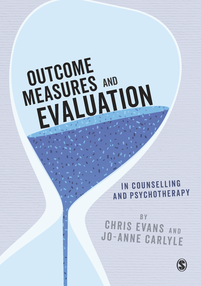This post is available in: English Español (Spanish) Português (Portuguese (Brazil)) Français (French), there may also be a subsite in your language, see "Subsites" in the top menu.
Translating self-report instruments well is not a quick translate/backtranslate process!
Please check below whether you have an approved translation.
CORE translation policy
Philosophy
CST has always held the copyright on all CORE instruments to ensure comparability of findings. However, we also always allowed reproduction on paper without any fee provided there were no changes (which would be illegal). We were always very keen for the CORE instruments to be translated for use in as many languages, cultures and countries as would be appropriate, keeping the same “copyleft” principles. However, it was clear to us that there were many terrible translations of self-report measures in existence, that the translation/backtranslation paradigm was flawed as way of securing good translations, and that it would be a challenge to get good translations done with no source of funding (no funding because we weren’t charging for use of the instruments).
What we don’t do
We noted that companies who charge reproduction fees for measures rarely support good translations and frequently charge people large sums, e.g. $2,500 , for the privilege of doing a translation. We were reliably informed that some then charge a higher reproduction fee on the translated copy than the original.
Aspirations and process
In the past bad translations of measures arose through too much reliance on the translation/back-translation method. That can produce a literal translation which is not a reflection of the design of the measure or good for the target language and culture. We have set requirements for translations (below) which are congruent with the ISPOR guidelines (Wild et al., 2005). Translations must capture the “heart” of CORE: that it should be acceptable to a very heterogeneous group of patients/clients (severely ill, suicidal, depressed, upset, anxious, etc.) and make them feel someone will look at the questionnaire and understand something of how they feel. A good translation need not show exactly the same psychometric parameters, e.g. of reliability, as the English version provided it is not grossly unreliable and that it fits the target language, culture and service setting.
If you are thinking of co-leading a translation (with me) …
You, we together, must follow the CORE/CST translation procedure. Like all translation procedures that is a map. Hall et al, 2017 had input from me (CE) and is a comprehensive summary of what’s involved in doing good translation of self-report measures with extensive checklists and guidance, and it’s open access: click here! Another paper that will help you understand procedures and translations is Evans, C., Paz, C., & Mascialino, G. (2021). “Infeliz” or “Triste”: A Paradigm for Mixed Methods Exploration of Outcome Measures Adaptation Across Language Variants. Frontiers in Psychology, 12, 695893. https://doi.org/10.3389/fpsyg.2021.695893. (Open access.) Finally, a growing sequence of blog posts about translations should help you understand this approach to translations, out of number order but the second post: Recent papers with perspectives on CORE translations (2): Yassin & Evans (2021) underlines that a protocol is a map but a good translation is a deliberate journey. I can let you have a copy of the paper if that leaves you thinking you want to take on such a journey.
Legalities
Translating the measures for reproduction without explicit permission from the copyright holders, CST, is a breach of copyright and could lead to legal action by us.
All translations MUST follow the CORE/CST translation procedure and the specific timing and procedure for the particular translation must be agreed with me (CE) (contact me (CE)) before any translation is started.
References
Wild, D., Grove, A., Martin, M., Eremenco, S., McElroy, S., Verjee-Lorenz, A., & Erikson, P. (2005). Principles of good practice for the translation and cultural adaptation process for Patient-Reported Outcomes (PRO) measures: report of the ISPOR task force for translation and cultural adaptation. Value in Health, 8: 94-104.
Hall, D. A., Zaragoza Domingo, S., Hamdache, L. Z., Manchaiah, V., Thammaiah, S., Evans, C., … ; On behalf of the International Collegium of Rehabilitative Audiology and TINnitus Research NETwork. (2017). A good practice guide for translating and adapting hearing-related questionnaires for different languages and cultures. International Journal of Audiology, 57(3), 161–175. https://doi.org/10.1080/14992027.2017.1393565.
Page created for 1/1/15 site launch, last updated 09/08/23, copyight text and header image (Mont Blanc from Aime2000) CE both released under licence: Attribution 4.0 International (CC BY 4.0) .
Content checker target (not for humans!): pW6QTTHWk@UHY



